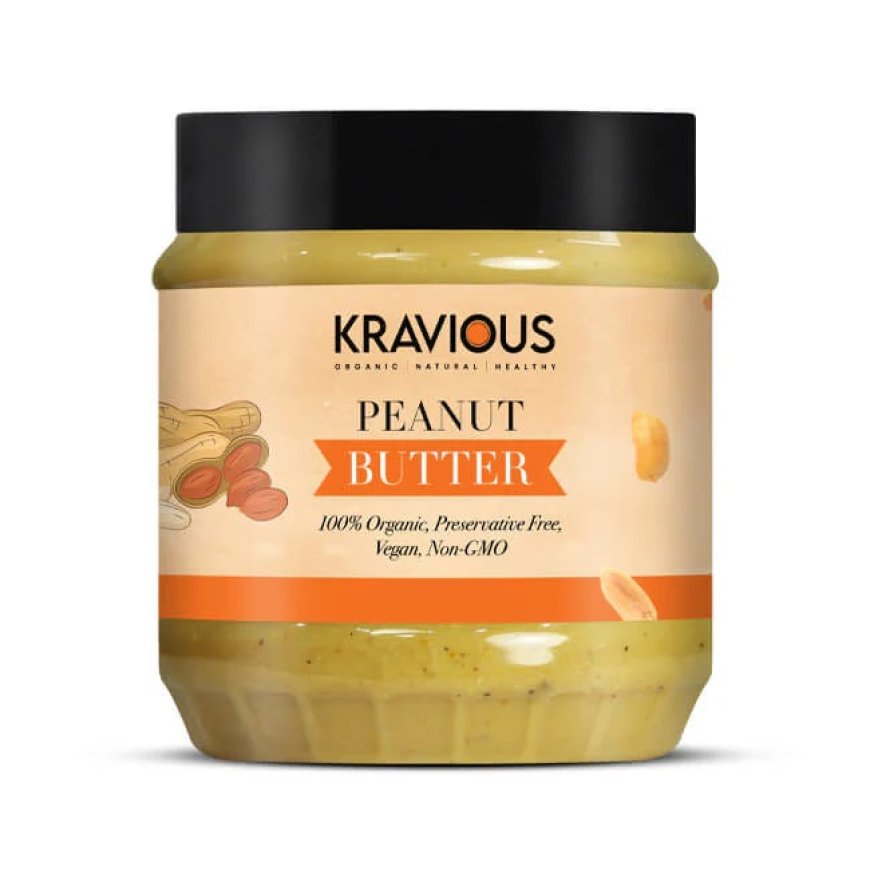How Local Factors Influence Peanut Butter Prices in Pakistan
Explore the dynamics behind peanut butter prices in Pakistan, from economic factors and agricultural outputs to supply chain challenges and government policies. Understand how brands like Kravious maintain premium quality amid rising costs. Discover tips on navigating price fluctuations and making informed purchasing decisions.

Peanut butter is a beloved staple in many households across Pakistan, but have you ever wondered why its price fluctuates so much? In this article, we'll dive deep into the local factors that influence peanut butter prices in Pakistan, from economic conditions to agricultural practices.
Economic Factors
Inflation Rates
Inflation is a primary driver of price changes for many goods, including peanut butter. When inflation rates rise, the cost of production and distribution increases, leading to higher retail prices.
Impact of Inflation on Peanut Butter Prices
Inflation affects everything from the cost of raw peanuts to the packaging materials used for peanut butter. As inflation rises, these costs are passed on to the consumer, resulting in higher prices on store shelves.
Currency Fluctuations
The value of the Pakistani rupee against other currencies plays a significant role in determining the price of imported goods, including some raw materials for peanut butter production.
How Currency Exchange Affects Import Costs
When the rupee weakens, the cost of importing goods increases. This includes not only peanuts but also other ingredients and packaging materials that might be sourced from abroad, thereby driving up the overall cost of peanut butter production.
Agricultural Factors
Peanut Production in Pakistan
Pakistan grows a significant amount of peanuts, but production levels can vary year to year.
Key Peanut Growing Regions
Regions like Punjab and Sindh are crucial for peanut cultivation. The yield from these areas directly affects the supply and price of peanuts in the market.
Seasonal Variations in Peanut Harvest
Peanut harvests are subject to seasonal variations, which can impact the supply and subsequently the price. Poor harvests lead to higher prices due to reduced supply.
Impact of Climate Change
Climate change is increasingly affecting agricultural outputs globally, and Pakistan is no exception.
Extreme Weather Events
Events such as floods and droughts can devastate peanut crops, reducing supply and pushing up prices.
Long-term Climate Trends
Long-term changes in climate patterns can alter growing seasons and affect peanut yields, creating a more volatile supply chain and pricing environment.
Supply Chain Factors
Transportation and Logistics
The efficiency of the supply chain is a critical factor in determining the final price of peanut butter.
Infrastructure Challenges
Pakistan's infrastructure, including roads and storage facilities, plays a significant role in the cost and efficiency of transporting peanuts from farms to processing facilities and eventually to markets.
Fuel Prices and Their Effect
Rising fuel prices increase transportation costs, which are then reflected in the price of peanut butter.
Storage and Processing
Proper storage and efficient processing are essential for maintaining peanut quality and keeping costs down.
Storage Facilities and Costs
The availability and cost of storage facilities can affect how much peanut supply is available at any given time, influencing prices.
Processing Technology and Efficiency
Advanced processing technologies can reduce costs and improve efficiency, but they require investment. The lack of such technologies can keep production costs high.
Market Demand
Local Consumption Trends
The demand for peanut butter in Pakistan is influenced by various factors, including dietary preferences and health consciousness.
Changing Dietary Preferences
As more people in Pakistan adopt Western dietary habits, the demand for peanut butter has increased, affecting its price.
Health Consciousness Among Consumers
With a growing focus on health and nutrition, peanut butter, known for its protein and healthy fats, has become more popular, driving up demand and prices.
Export Market
Export demand can significantly impact local prices.
Demand from Neighboring Countries
Neighboring countries with a high demand for peanuts or peanut butter can drive up prices in Pakistan as producers seek to capitalize on these markets.
International Trade Policies
Trade policies and tariffs between Pakistan and other countries can also affect the export and import of peanuts and peanut butter, influencing local prices.
Government Policies
Agricultural Subsidies
Government subsidies can support peanut farmers, helping to stabilize prices.
Support for Peanut Farmers
Subsidies for peanut farming can help reduce production costs, leading to more stable prices for peanut butter.
Import Tariffs and Duties
Tariffs and duties on imported goods can affect the cost of raw materials and finished products.
Tariffs on Imported Raw Materials
High tariffs on imported peanuts or other raw materials can increase production costs, resulting in higher prices for consumers.
Duties on Finished Peanut Butter Products
Import duties on finished peanut butter products can protect local producers but also affect the overall market price.
Kravious: Premium Peanut Butter in Pakistan
In Pakistan, one brand stands out for its high-quality, premium peanut butter—Kravious. Although the peanut butter price in Pakistan can be high, Kravious offers unmatched quality that justifies the cost. Known for its rich, creamy texture and pure peanut flavor, Kravious peanut butter is a favorite among those who seek the best. This brand sources the finest peanuts and uses state-of-the-art processing techniques to ensure top-notch quality. Despite the higher price, Kravious delivers a product that is well worth the investment for peanut butter enthusiasts in Pakistan.
Conclusion
The price of peanut butter in Pakistan is influenced by a myriad of local factors, from economic conditions and agricultural outputs to supply chain efficiency and government policies. Understanding these factors can help consumers and producers alike navigate the complexities of the market and anticipate future price trends. As the interplay of these elements continues to evolve, the price of peanut butter will remain a dynamic aspect of the Pakistani food market.
What's Your Reaction?
























![Akusoli Preis: [ Wo investieren? ] Warum die Investition in Akusoli Enlegesohlen jeden Cent wert ist](https://news.bangboxonline.com/uploads/images/202412/image_430x256_6763e2d2647b4.jpg)
![Akusoli Kaufen : [ Beste Einlegesohlen im Jahr 2024 ] Sie in Akusoli Enlegesohlen investieren sollten.](https://news.bangboxonline.com/uploads/images/202412/image_430x256_6763e2887ea5d.jpg)



